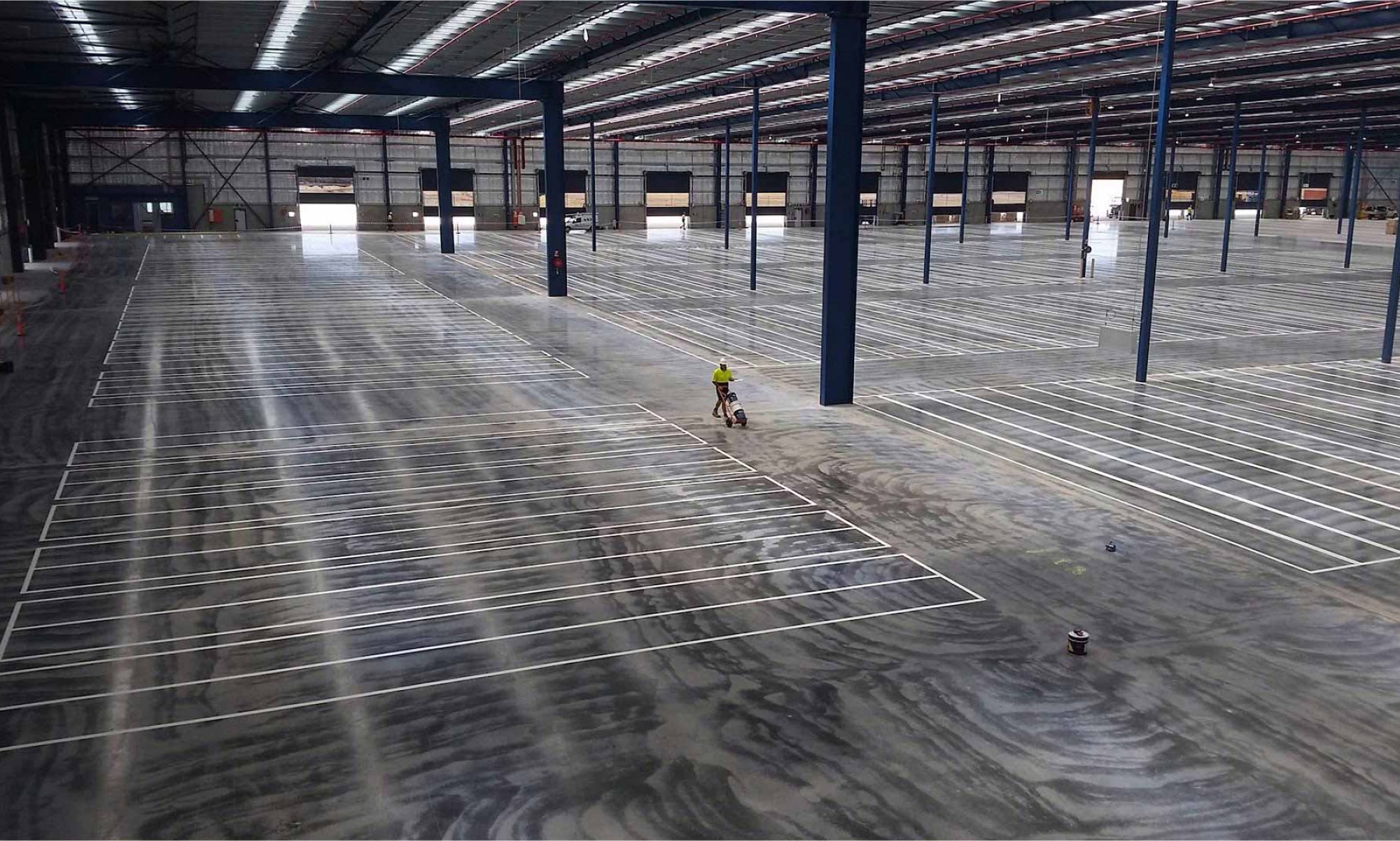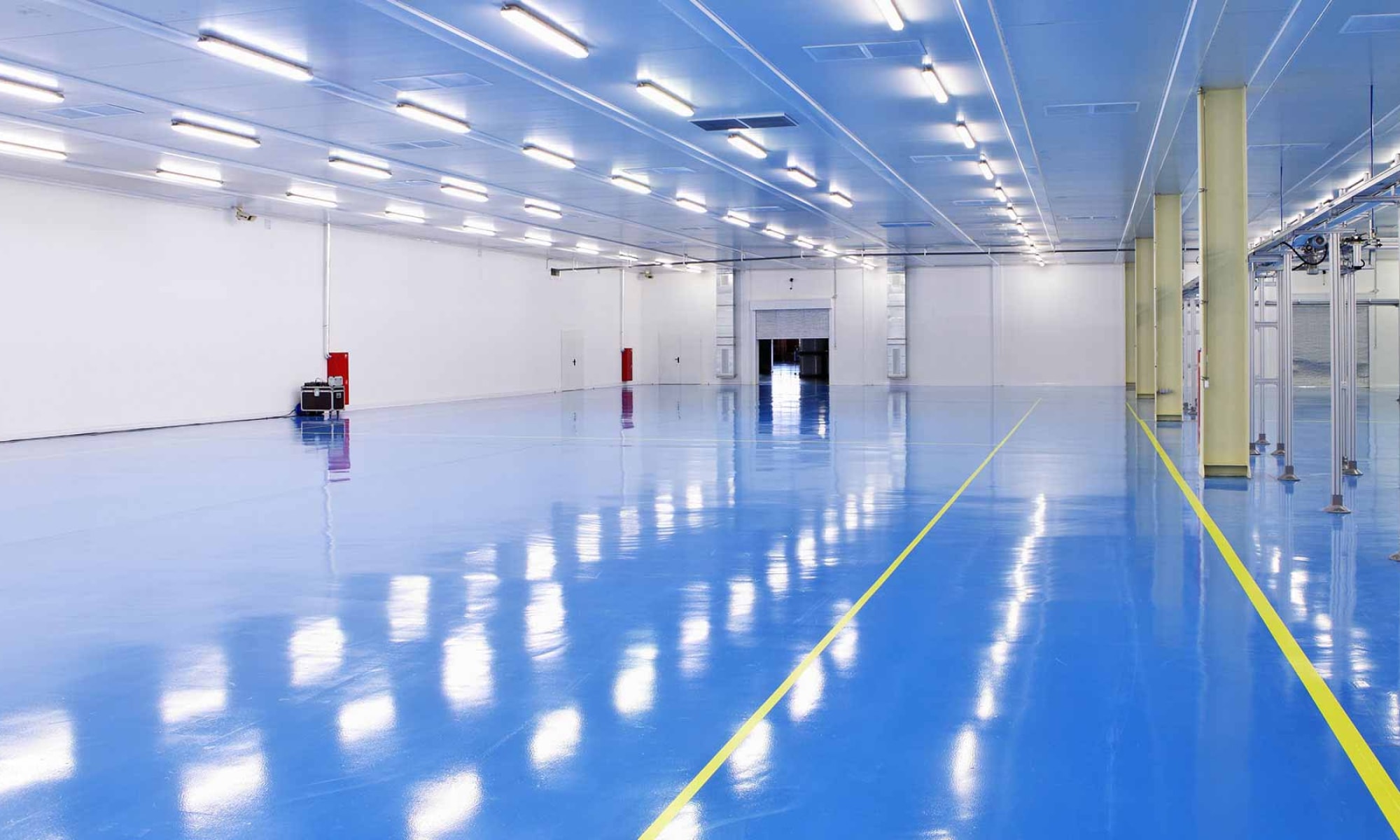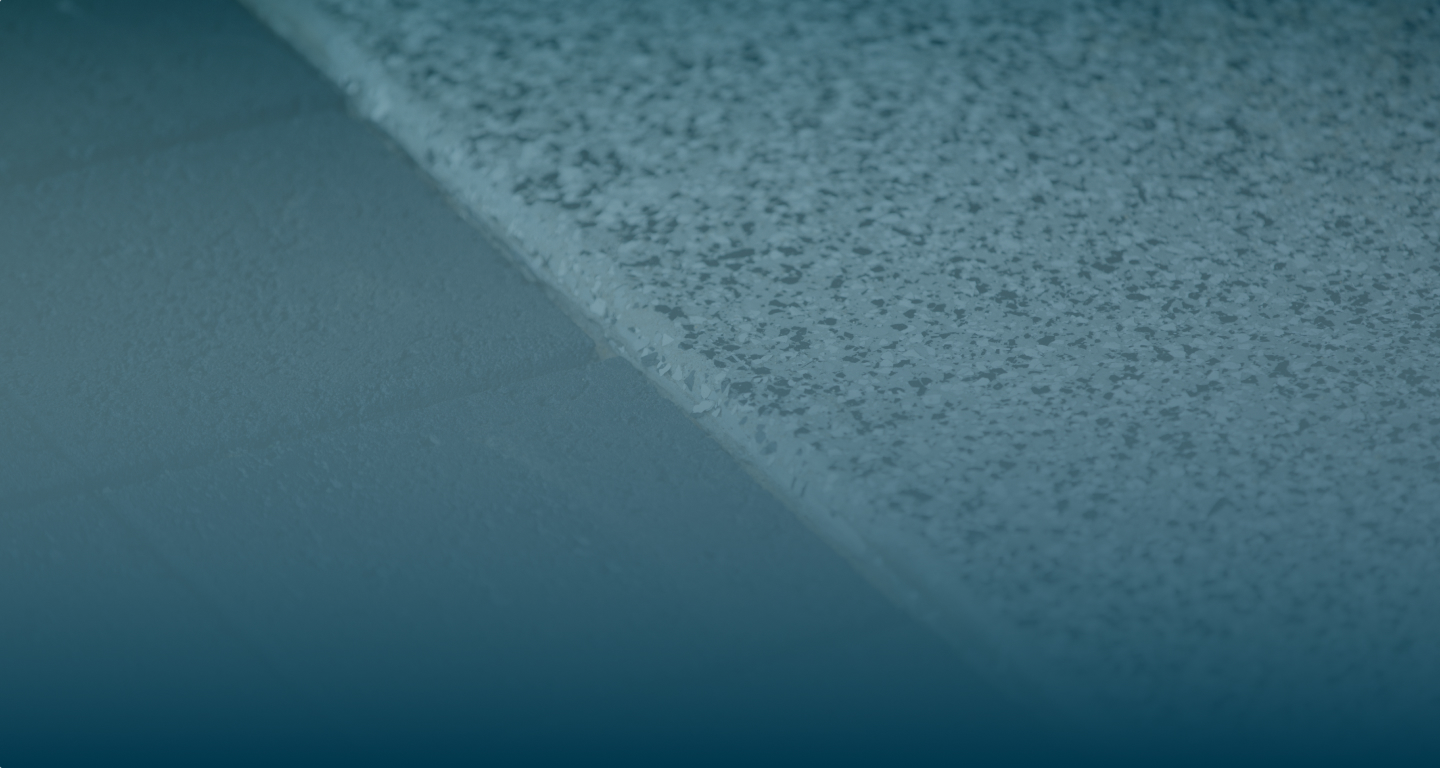Renovating your warehouse is one of the most effective ways to improve business efficiency, but it often falls to the bottom of an organisation’s priority list. If you’re a warehouse manager, logistics supervisor, or business development executive, we’ve provided everything you need to make a case for upgrading your warehouse facilities, as well as information on non-slip warehouse flooring and line marking, to aisle design and warehouse racking.
A place for everything and everything in its place.
The business case for a warehouse renovation is simple: productivity. This singular project will improve efficiency and safety while reducing waste. By reconsidering your layouts, you can reduce wasted space, product-to-product pick time, and the risk of accidents.
Start with planning
Your warehouse’s design will be determined by the types, range and volume of product you make or store. A limited number of product lines with a high turnover could mean that drive-in racking is the best option for your business, as it works on a FILO (first-in, last out) methodology.
If your requirements are for pick/pack, with employees doing most of the goods handling, you may need shelves at human-level, as well as wider aisles for replenishment via forklift access. Is your warehouse operating as a workshop? If so, longspan shelving could bring the most significant benefits, with a mezzanine to make additional room for storage or an office.
When planning your warehouse renovation, take the time to consider repairs to the roof, plan for specialised areas (such as loading dock space), and investigate structural requirements. Consider waterproofing, fireproofing, insulation, and structural issues in the early stages of the project.
Reorganise isles for your new workflow
Having optimal pick paths for order fulfilment is vital for optimisation. When looked at in aggregate, efficient staff movement through the warehouse can significantly reduce turnaround time and labour costs. That might mean storing items that are frequently purchased together close to one another, or switching to a linear picking order.
Warehouse flooring surfaces: what’s best?
This may be your only chance to change the floor. Before you transfer or install racking for your warehouse, look at your warehouse flooring. It must be flat, non-skid, easy to clean and hardwearing.
Warehouse concrete floors are usually coated with warehouse epoxy as the industry standard. Where polished concrete can be absorbent or become slippery when wet, adding a layer of epoxy has the option of adding an aggregate to make it into low- or non-slip flooring.
Epoxy flooring can be clear, uniformly coloured, or a patterned style known as flake flooring. The non-permeable coating stops spilled liquids from sinking in, reducing damp. Epoxy is also incredibly easy to maintain hygienically, either with the standard broom/bucket/mop, or high-pressure cleaning.
Warehouse line marking
Once your warehouse floor plan is mapped out, and your warehouse epoxy floor is laid, the step is marking the lines where everything will go. That includes:
- Safe travel paths for employees
- Safe travel paths for forklifts/automated pickers
- Clearways
- Highlighting danger zones
- Wayfinding to exits, extinguishers and eye-washers
- Aisle and specific use identification
- Safe distance markers around racking
Consult the experts before you start
Where a warehouse is being gutted completely, we recommend employing an interior architect with experience in warehouse conversions to maximise the building’s potential.
To discuss your warehouse flooring renovations, epoxy flooring project or line marking requirements, talk to the experts at Kleenit. We’ll be happy to offer a free, no-obligation quote for your warehouse flooring project, with services available across Australia.





